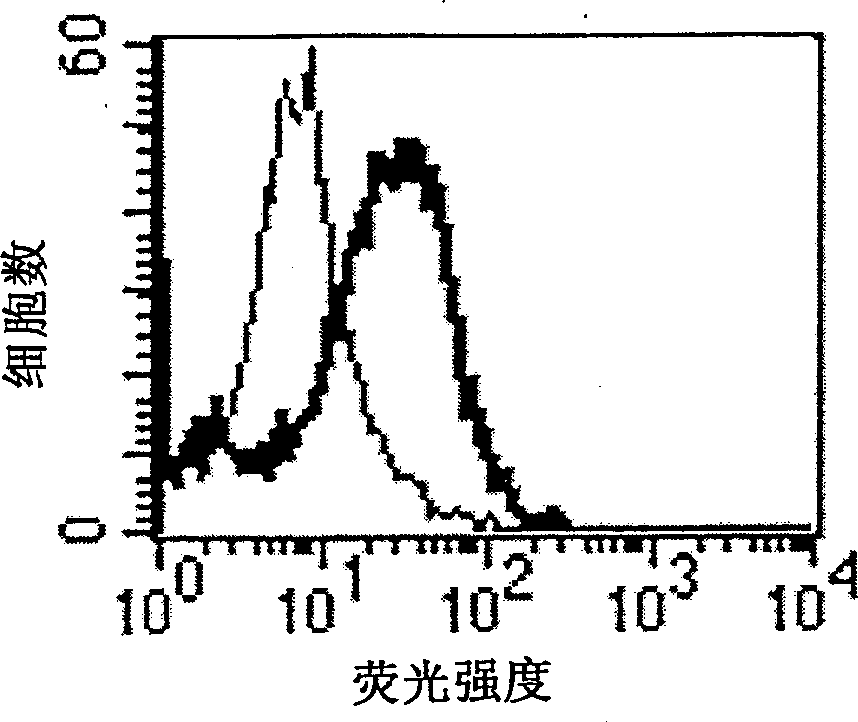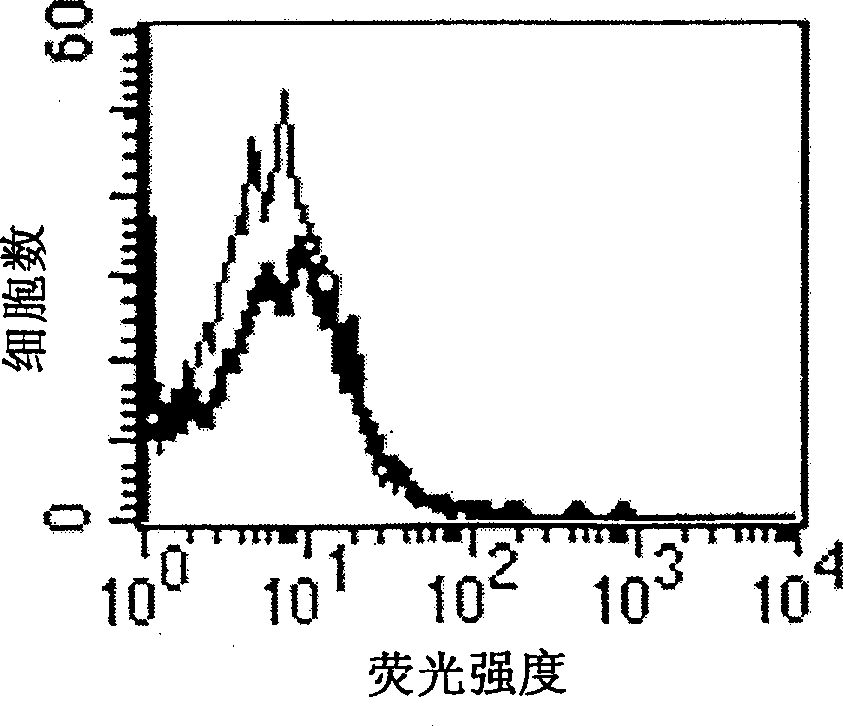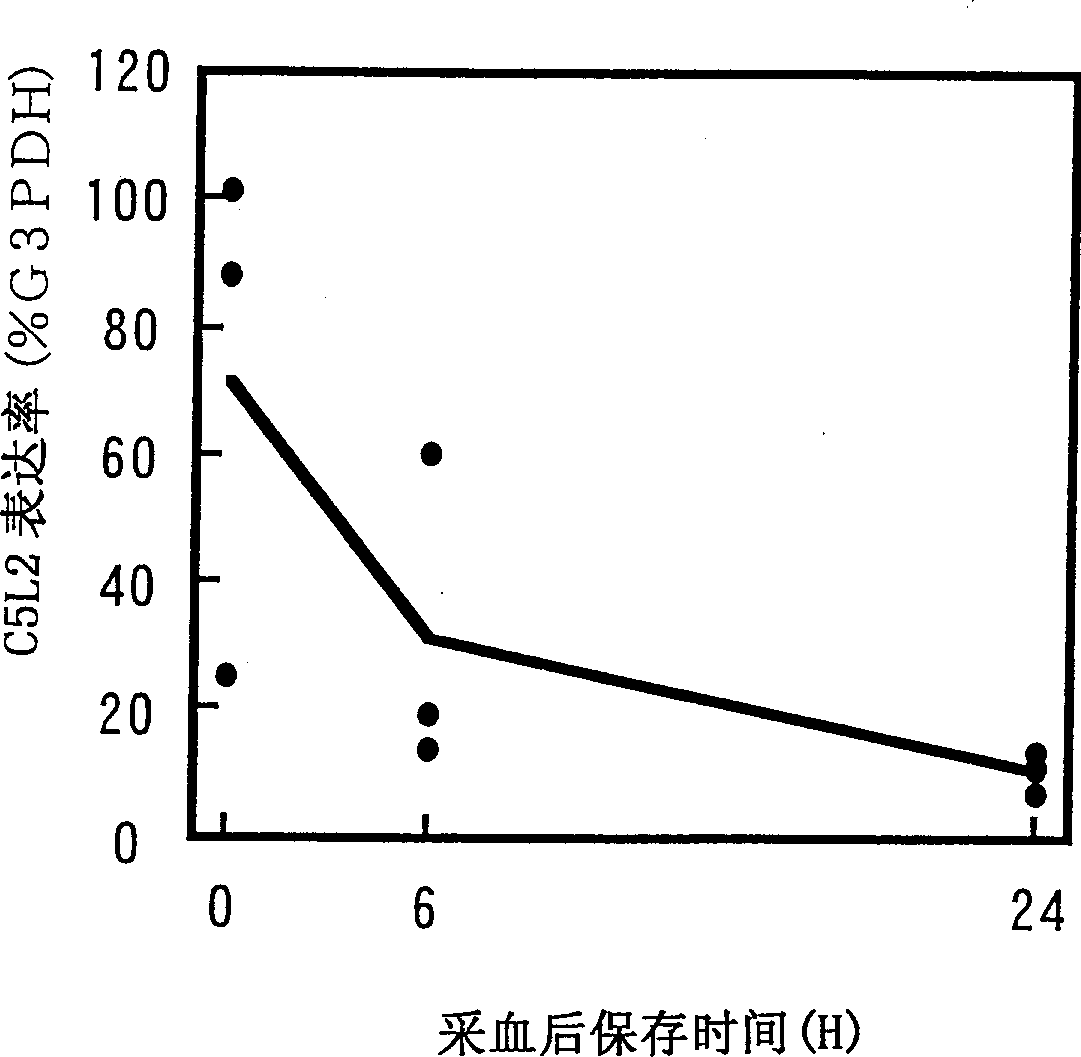Novel receptor protein and method for diagnosing inflammatory diseases by using the same
A diagnostic method and protein technology, applied to seven transmembrane receptor proteins and their DNA encoding them, novel seven transmembrane receptor proteins and their DNA encoding them, ligands and blocking ligands and seven transmembrane receptor proteins In the field of membrane receptors, it can solve the problem of low positive rate
- Summary
- Abstract
- Description
- Claims
- Application Information
AI Technical Summary
Problems solved by technology
Method used
Image
Examples
Embodiment 1
[0144] Embodiment 1 The acquisition of novel seven transmembrane receptor gene fragments
[0145] The nucleated cells recovered from 1 liter of peripheral blood buffy coat of healthy people were cultured for 14 days at 37° C. under 5% carbon dioxide environment to differentiate into immature dendritic cells. A culture medium containing 10% fetal bovine serum (FBS) (manufactured by Intergen, USA), 100ng / ml human GM-CSF, 50ng / ml human IL-4 and 1× antibiotic-antimycotic agent (100IU / ml penicillin, 100μg / ml ml streptomycin and 0.25 μg / ml amphotericin B) (USA, GIBCO BRL ) of RPMI1640 medium. This gives 1 x 10 from peripheral leukocytes 7 immature dendritic cells.
[0146] Recover the immature dendritic cells obtained, suspend in 30 ml of PBS (phosphate buffered saline), use the Quick Prep mRNA purification kit (made by Pharmacia Biotech in Sweden), and extract mRNA according to the operating procedures except that the second column purification is not performed . Next, 1 μg ...
Embodiment 2
[0150] Example 2 Acquisition of the full-length gene of the novel seven-transmembrane receptor
[0151] A clone having the full-length cDNA of the seven-transmembrane receptor of the present invention was isolated from a cDNA library derived from human placenta tissue (manufactured by CLONTECH, USA) by plaque hybridization. Specifically, 106 phages were inoculated on a culture plate according to the usual method, and the plaques that appeared were transferred to a nylon filter membrane Hybond N+ (manufactured by Amersham, UK). Place the transferred nylon filter on the filter paper soaked with alkaline buffer (1.5M NaCl / 0.5M NaOH) for 5 minutes for alkaline treatment, and then neutralize the buffer (1.5M NaCl / 0.5M Tris-HCl, pH7 .5) Place on the soaked filter paper for 5 minutes for neutralization. Also, the neutralization treatment was repeated twice. After neutralization, the filter membrane was shaken and washed twice for 5 minutes in 2×SSC solution (1×SSC solution, 0.15M N...
Embodiment 3
[0156] Example 3 Analysis with Northern blot (Northern blotting)
[0157] The expression of mRNA in each organ of the human seven transmembrane receptor C5L2 obtained from the full-length base sequence of the gene in Example 2 was analyzed by Northern blot. As filters for immobilizing RNA from each organ, Multiple Tissue Northern (MTN) blotting filters (Cat. #7757-1, #7759-1, #7760-1, and #7767-1) (manufactured by CLONTECH, USA) were used. As a probe, the NaeI-EcoRI fragment at the 3' end of the C5L2 gene was used in the same manner as in Example 2 32 The form of the P tag is used. Immerse the above filter membrane in a solution containing 5×SSPE (1×SSPE solution is 0.15M NaCl / 10mM NaH 2 PO 4 / 1mM EDTA, pH 7.4), 10×Denhardht solution, 2% SDS, 50% formamide and 100 μg / ml salmon sperm DNA hybridization solution, shaking at 50°C for 2 hours. Next, the probe was added into the hybridization solution, and shaken at 50° C. for 16 hours to perform hybridization.
[0158] The was...
PUM
 Login to View More
Login to View More Abstract
Description
Claims
Application Information
 Login to View More
Login to View More - R&D
- Intellectual Property
- Life Sciences
- Materials
- Tech Scout
- Unparalleled Data Quality
- Higher Quality Content
- 60% Fewer Hallucinations
Browse by: Latest US Patents, China's latest patents, Technical Efficacy Thesaurus, Application Domain, Technology Topic, Popular Technical Reports.
© 2025 PatSnap. All rights reserved.Legal|Privacy policy|Modern Slavery Act Transparency Statement|Sitemap|About US| Contact US: help@patsnap.com



